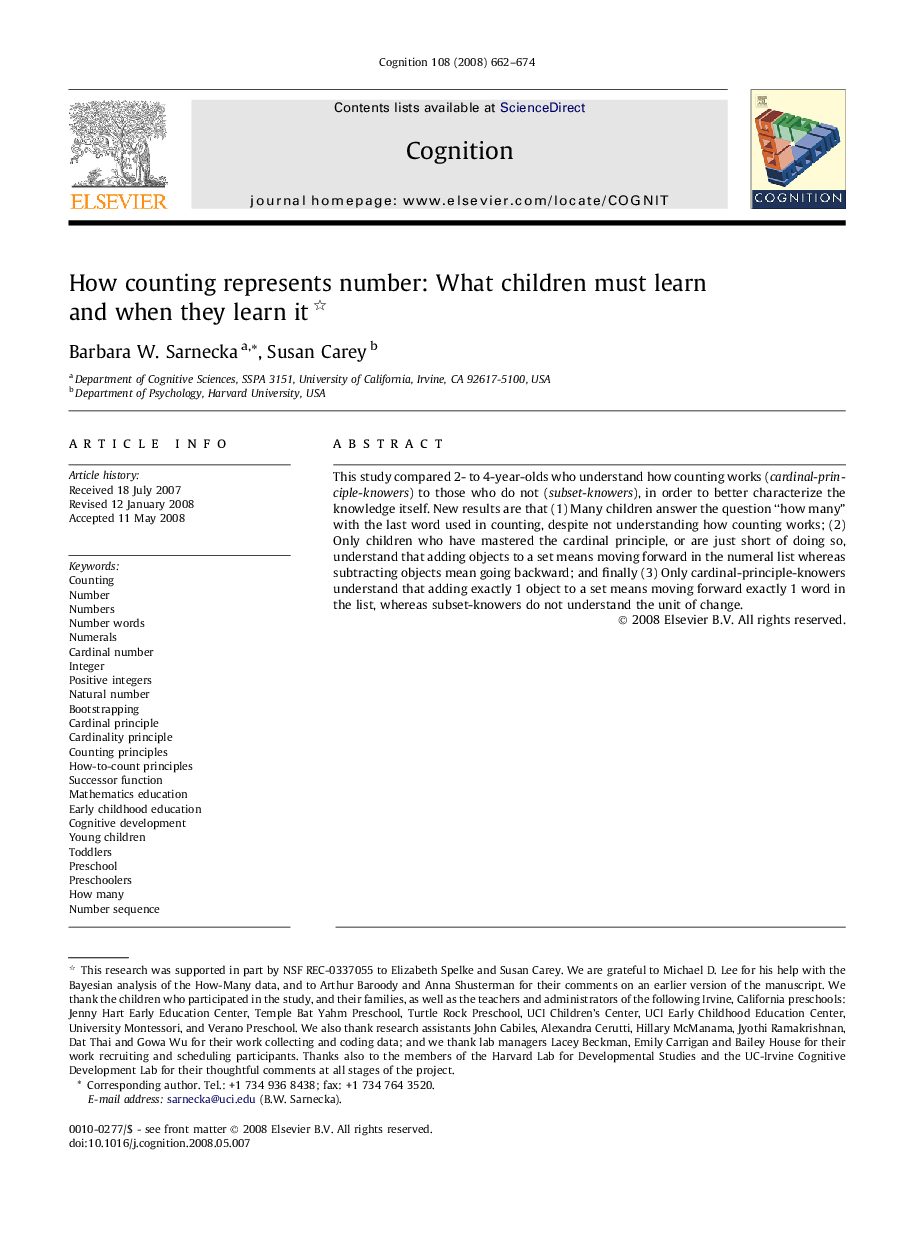| Article ID | Journal | Published Year | Pages | File Type |
|---|---|---|---|---|
| 927307 | Cognition | 2008 | 13 Pages |
This study compared 2- to 4-year-olds who understand how counting works (cardinal-principle-knowers) to those who do not (subset-knowers), in order to better characterize the knowledge itself. New results are that (1) Many children answer the question “how many” with the last word used in counting, despite not understanding how counting works; (2) Only children who have mastered the cardinal principle, or are just short of doing so, understand that adding objects to a set means moving forward in the numeral list whereas subtracting objects mean going backward; and finally (3) Only cardinal-principle-knowers understand that adding exactly 1 object to a set means moving forward exactly 1 word in the list, whereas subset-knowers do not understand the unit of change.
